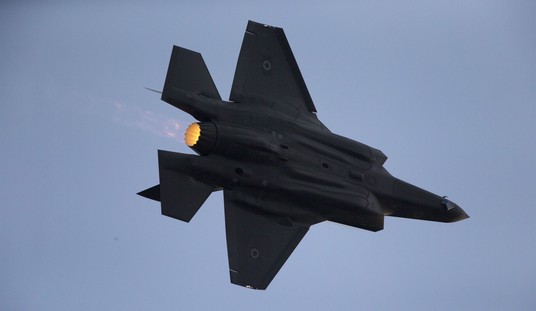Pressing a barbell overhead is one of the oldest exercises in the gym. It might well have been the first exercise invented after the first barbell was discovered. Since it is performed while standing with the bar in the hands — after the bar is cleaned from the ground to the shoulders, or taken from the rack at shoulder height — the entire body is involved in the exercise. From the floor to the hands, the job of pressing the bar overhead is shared by all the muscles in the body.
But for some bizarre reason, the press has acquired the entirely undeserved reputation as a dangerous exercise for the shoulders.
Due to a poor understanding of the mechanics of the movement, doctors and physical therapists commonly advise against performing this perfectly natural and perfectly safe exercise. The alleged problem is an injury known as “shoulder impingement,” and nothing could be further from the truth. The correctly performed press (incorrectly-performed exercises do not count) is not only perfectly safe for the shoulders — more importantly, the press is the best exercise for keeping shoulders strong and injury-free. Here’s why.
1. Performed properly you cannot impinge the shoulder tendons with an overhead press.
Impingement means the entrapment or “pinching” of the soft tissue between the bones in the area of a joint. Shoulder impingement occurs when the rotator cuff tendons get squeezed between the bones that comprise the shoulder joint — the head of the humerus, the distal end of the collarbone, and the distal end of the scapula. The AC joint, formed by the bony knobs at the end of the shoulder blade (the Acromion process and the coracoid process) and the end of the collarbone (the Clavicle), lies on top of the joint itself, which is formed by the head of the humerus and the shallow cup of the glenoid on the scapula. The entrapment occurs when the tendons get pinched between the head of the humerus and the AC joint.
Let’s investigate this “impingement” scenario for ourselves.
Stand up straight and raise your arms to a position parallel to the floor, like the letter “T” with your palms facing the floor. Now, bend your elbows to 90 degrees, and raise them a little more, just a little above your shoulders. You will feel some pressure and discomfort in your shoulders, and this is impingement — your cuff tendons are being squeezed between the AC and the head of the humerus.
Now, rotate your hands up so your palms face forward, elbows still at 90 degrees, like you’re surrendering, and raise your hands up over your head. Then shrug your shoulders toward the ceiling as high as they’ll go. Notice the absence of the pinching sensation. This is the correct lockout position of the overhead press, and during this motion your shoulders did not feel the same impingement pressure they did in the previous position.
Amazing, but why?
The shrugging of the shoulders at the top rotates the scapulas up and in, towards the middle, pulling the knobby parts of the AC away from the head of the humerus, so that there is more space between them.
It is therefore anatomically impossible to impinge the cuff tendons in a correctly performed overhead press.
2. More muscles working in coordination with the feet on the ground is much better for practical strength production.
The press is traditionally and correctly performed in a standing position, with the barbell in the hands and the feet on the floor (the seated press is a different exercise entirely). Remember from the deadlift article that the “kinetic chain” is all the musculoskeletal components between the load on the bar and the base of support — the ground. As with the deadlift, the kinetic chain of the press is the entire body. Everything between the bar in the hands and the feet balancing against the floor participates in the exercise. Legs, abs, back and neck muscles, and the obvious shoulder and arm muscles all work together in the press.
Sixty years ago, the press was the primary weight room exercise for the upper body. It’s a damned shame the bench press so thoroughly replaced it.
Back in “the day,” as the kids say, shoulder injuries were rare enough that most lifters didn’t know what the rotator cuff was. The press made the shoulders strong — the whole shoulder, front to back, not just the front of the shoulder and the pecs (the “chesticles”) like the bench press does. The bench press allows the use of heavier weights because it’s a shorter movement, but its kinetic chain leaves out the parts of the body that balance you while you move the bar.
For athletics and physically active people in any application, more muscle mass working in coordination with the feet on the ground is much better for practical strength production than isolation exercises, because this is the way your muscles operate in sports and in life. There are no sports that use only two or three muscles or one leg or one arm at a time, so the use of isolation exercises with light weights makes very little sense, especially for someone who is not already strong enough to press a significant fraction of their bodyweight overhead.
3. Your whole body benefits.
Physical therapists are taught a lot of muscular anatomy in school. They know the origins and insertions of the muscles — the points on the bones where the tendons of the muscles attach — and consequently they know how each individual muscle functions by itself. They like to rehab injured muscles by isolating their function and working them with very light weights. The isolated function of the muscles that lie on the back of the shoulder blade is “external rotation” of the upper arm. This motion occurs when you lay your arms down against your ribs, bend your elbows and rotate your forearms out so that your palms face forward. Your humerus rotates “externally” along its axis when you do this, and the rotator cuff muscles make this happen in isolation.
The question is: what is the normal daily role of a “rotator cuff” muscle, and does it perform this function all by itself? Does it make your shoulder externally rotate, and that’s all? Or does it primarily function as one of several muscle groups that stabilize the head of the humerus in the glenoid, while also externally rotating the arm when you’re in a physical therapy office, lying on your side with a two-pound chrome dumbbell in your hand? The rotator cuff muscles are just another muscle group that helps hold the shoulder together, and they are best trained — and rehabbed — while performing this function.
The press is precisely the movement that uses all the shoulder muscles in this manner. Since they are functioning simultaneously with the other muscles that press the bar overhead, they are both strengthened with and protected by the rest of the muscles that operate the shoulder girdle. This is their normal function — synergy, not isolation, and the best way to make them strong and healthy.
So, if you start pressing with a light weight and grow stronger by adding a little weight each time you train, all the muscles you use in the press get stronger. From your hands to your feet, your whole body benefits from this perfectly safe and very important exercise. Once you’re able to handle heavy weights correctly overhead, you’ll know that strong shoulders are healthy shoulders, and the best way to make them strong is by pressing the barbell overhead.












Join the conversation as a VIP Member